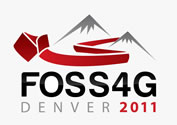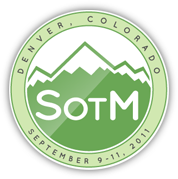Modeling of landslide-generated tsunamis with GRASS
Session Type:
Academic Session
Presenter(s):
Dr. Massimiliano Cannata, SUPSI-IST
Roberto Marzocchi
Intense earthquakes, like those recently registered in Japan and New Zealand may trigger landslides phenomena. In these cases terrain instabilities can suddenly failure and, if water bodies are in the proximities, generate impulse wave tsunami that may pose at risk population and infrastructures. Although the energy of such a kind of tsunami is in general rapidly dissipated, in water body like artificial basins, natural lakes or fjords the effect can still be destructive, either due to run-up of the wave on the nearby shores or due to dam overtopping.
This research work illustrates how landslide generated tsunami can been modeled within the GRASS GIS by considering the wave generation, its propagation and finally the run-up/overtopping and flooding.
The implemented modules apply the equation from Heller 2009 to estimate the impulse product parameter (P), that takes into account all the slide impact characteristics (mass velocity, slope, thickness, etc.), for the estimation of maximum wave height. Afterwards, the propagation and run-up are estimated with both the shallow water equation approach and the empirical formulation by Heller 2009 for comparison analysis purpose.
The applied modeling equations, numerical schemes and results are here presented within a risk assessment executed on a case study of “Torrioni di Rialba” located on the Como Lake. This area is characterized by the presence of a conglomeratic column 100 meters height delimited by a tension crack: a possible toppling of the column may cause a 50’000 m3 rock falling into the lake and generating an impact wave tsunami.
This research integrates some previous works presented in the past FOSS4G conference like “RiskBox: Natural Hazards and Risks Analysis within the GIS GRASS” (FOSS4G 2007), “Natural Hazards and Risk Assessment: the FOSS4G capabilities” (FOSS4G 2008) and “Two-dimensional dam break flooding simulation: a GIS embedded approach” (FOSS4G 2009).
Speaker Bio:
With a PhD in Geodesy and Geomatic Engineering he's the head of the Geomatics Division at the SUPSI; He's interest are in monitoring and natural hazard modelling. He's member of the ZOO and GRASS PSC and OSGeo member.
Schedule info
Time slot:
Wed, 09/14/2011 - 10:30am - 11:00am
Room:
Spruce 










